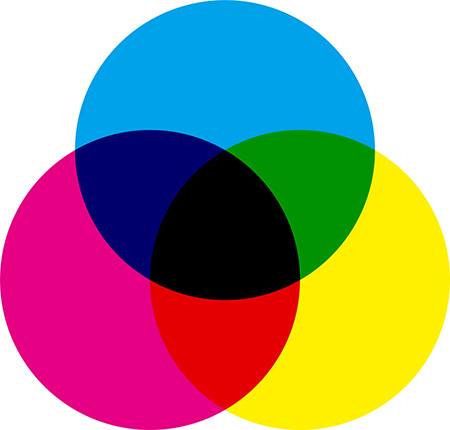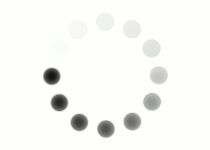 Subtractive color refers to the four inks used in color printing: cyan, magenta, yellow and black (called "key" and given the letter K instead of a B). The CMYK model works by laying colors on a white background to absorb (or subtract) the light that hits the ink and only reflect the color you see back to your eye. So the magenta ink absorbs all of the other colors so that you can't see them and then bounces magenta light back to you.
Subtractive color refers to the four inks used in color printing: cyan, magenta, yellow and black (called "key" and given the letter K instead of a B). The CMYK model works by laying colors on a white background to absorb (or subtract) the light that hits the ink and only reflect the color you see back to your eye. So the magenta ink absorbs all of the other colors so that you can't see them and then bounces magenta light back to you.
In additive color white is created by combining all three additive primary colors, while black is the absence of projected light. In CMYK, it is the opposite: white is the natural color of the paper, while black is made by combining all color inks.
The example to the right shows how subtractive colors are combined to create a larger spectrum of colors. Notice how red, green and blue are created where two colors overlap, and pure black appears when all three are combined.

|
|||
|
Combined |
|||

|
|||
| Cyan Ink | Magenta Ink | Yellow Ink | Black Ink |
Question
Why do printers need to use black ink along with cyan, yellow, and magenta, if those three colors combined create black?
